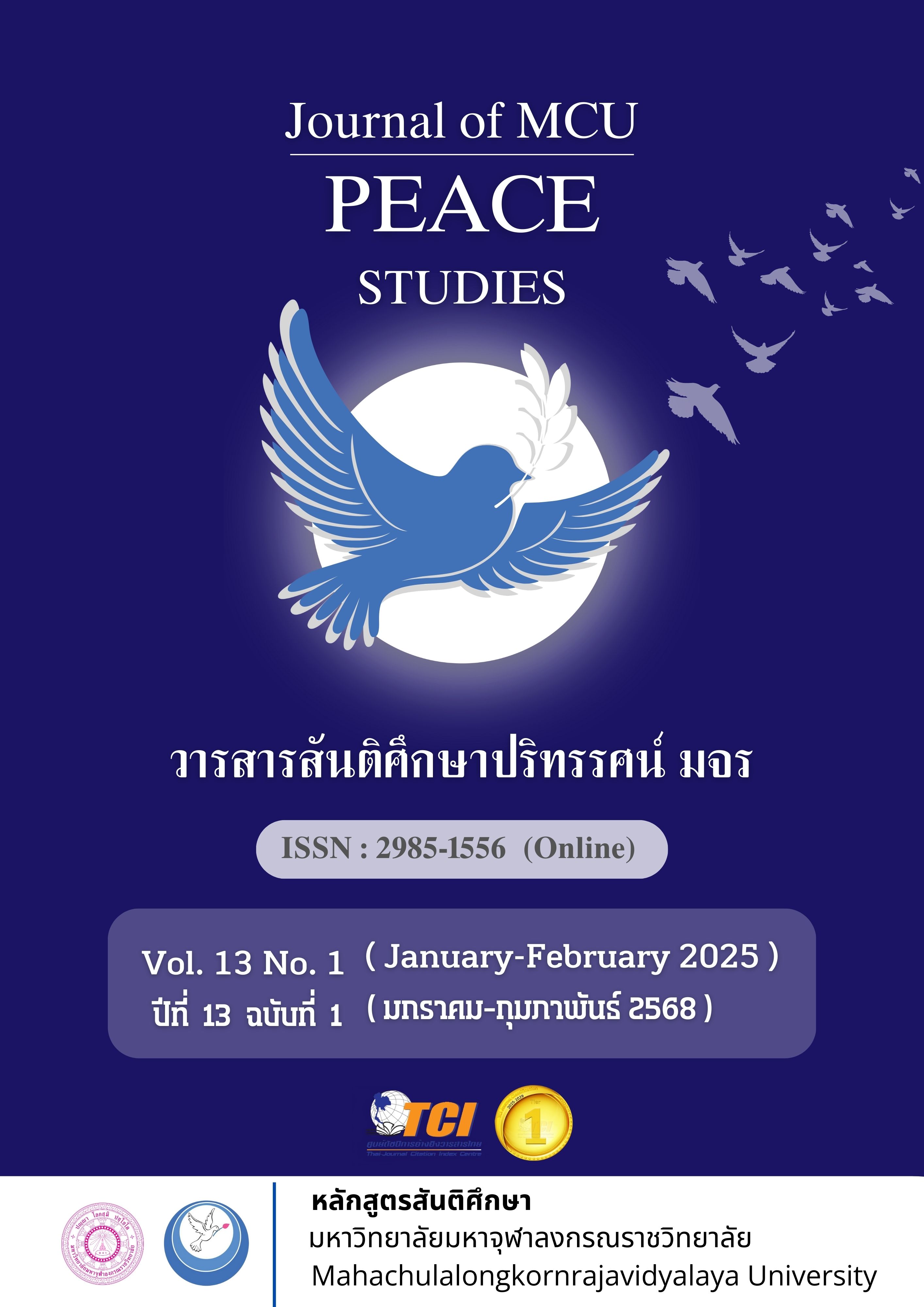Mediation Process before Prosecution by Buddhist Peaceful Means
Main Article Content
Abstract
Nowadays, various conflicts between individuals or organizations have been occurring and increasing more and more in our society. The conflict areas have expanded to be groups of people and communities, and also leading to the conflicts between societies, national and international levels. For example, the conflict between countries can lead to military forces and wars, which costs both nations’ military budget, and also causes their losses of citizen’s lives, properties and countries’ economy. These conflict issues can affect the nations to be lack of development. According to the main process of judgement, when the offender causes damages to the victim, a court will have the process to consider the offenses in accordance with violation of the law and punishment. This process involves several sectors, such as the government, police, attorney, offender’s lawyer, victim’s lawyer, and judge, who investigates the case. When the offender committed a criminal crime, he/she has to be sentenced to jail, and also responsible for the compensatory damages to the victim. On the other hand, the victim does not receive the compensation from the offender, since he/she has already been sentenced to jail; in addition, if the victim has his/her family, relatives or friends, these people will also feel sorrow. Therefore, the victim who does not receive any compensatory damages or healing solutions from the offender or government will feel that he/she does not get justice as well.
Furthermore, there are various methods which can be applied to resolve the conflicts. However, this article is illustrating the method that utilized the Buddhist Peaceful Means, by applying the Buddhist Peaceful Means with the mediation process to solve the conflicts that have currently occurred in the society for both individuals and organizations. The purpose of this application is to help and improve the mediation process between the victims and the offenders to be more efficiency and successful, and also to avoid the prosecution in court process.
Article Details

This work is licensed under a Creative Commons Attribution-NonCommercial-NoDerivatives 4.0 International License.
Views and opinions expressed in the articles published by The Journal of MCU Peace Studies, are of responsibility by such authors but not the editors and do not necessarily reflect those of the editors.
References
Court of Justice. (2018). About the Office of the Judiciary. Retrieved April 12, 2022, form https://www.coj.go.th/th/content/page/index/id/16
Judicial Promotion Office, Office of the Judiciary. (2017). Handbook for Dispute Mediation System in Courts According to the Supreme Court President's Regulations on Mediation B.E. 2554 (2011). Bangkok: Thana Press Co., Ltd.
Mahachulalongkornrajavidyalaya University. (1996). Thai Tripitakas. Bangkok: MCU Press.
Ministry of Justice. (2017). History and Evolution of the Ministry of Justice. Retrieved April 12, 2022, form https://www.moj.go.th/view/11
Office of the Judiciary. (2006). Psychological Techniques for Mediation. (7th ed.). Bangkok: Active Print Co., Ltd.
Phramaha Hansa Dhammahaso (Nithiboonyakorn). (2018). Buddhist Peaceful Means: Integration of Principles and Tools for Conflict Management. (2nd ed.). Bangkok: Prayoonsanthai Printing Limited Partnership.
Pratheuangrattana, Ch. (2018). A Mediation Model by the Integration of Buddhist Peaceful Means. (Doctoral Dissertation). Mahachulalongkornrajavidyalaya University. Ayutthaya.
The Supreme Court President's Regulations on Mediation B.E. 2554. (2011, 7 October). Royal Gazette. Vol. 128, Issue 73 a.
Watthanasap, W., Phothiransiyakorn, N., Khanthong, A., Kasemwongchit, K., & Harasith, S. (2011). Citizen's Mediation and Dispute Conciliation Handbook. Bangkok: Klung Na Na Vithya Press Limited Partnership.

